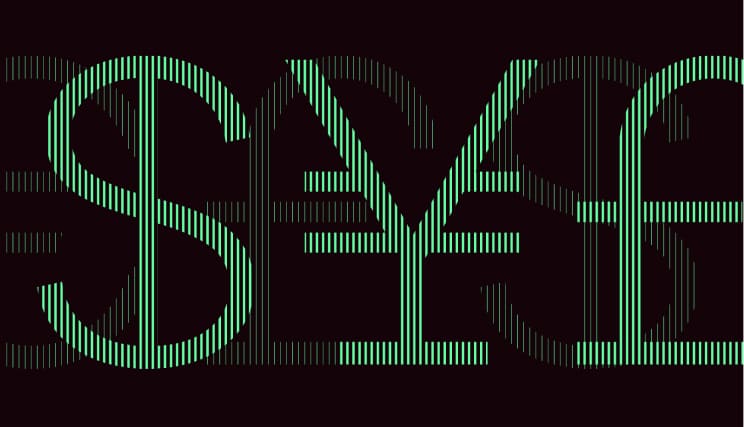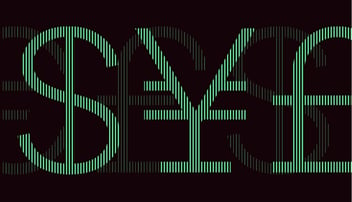Gain an overview of the latest developments on the currency market and anticipate fluctuation risks.
The die is cast
A new Trump 2.0 era is set to begin. Unsurprisingly, Trump trades are all the rage: on 6 November, the dollar staged its strongest rally since 2020, the euro plunged and Bitcoin hit new records. Rumours are rife on trading floors: some are concerned the Chinese yuan will be devalued amid mounting US protectionism, while others fear a surge in US borrowing rates because of the burgeoning deficit, potentially threatening the dollar’s dominance. What is true and what is false?
EUR/USD
High: 1.0997 Low: 1.0682 Change: -1.68%
There is no doubt the euro will be in for a difficult time in the months ahead. The single currency is already suffering from an economy on the verge of recession and an overly restrictive monetary policy. Added to this today is the risk of a trade stand-off between the US and Europe that would most likely result in a defeat for Europe. We forecast a EUR/USD rate of 1.05 over the coming months.
EUR/GBP
High: 0.8450 Low: 0.8298 Change: -0.83%
From a technical analysis perspective, the EUR/GBP pair’s direction is clear in the medium term. We foresee a continued depreciation with a test of the 0.83 zone that will probably trigger a technical recovery. Can this pair go lower for an extended period? This is not our baseline scenario at present.
GBP/USD
High: 1.3115 Low: 1.2881 Change: -0.76%
In the short term, the pair is in a consolidation phase at around 1.29. This was expected. However, it will probably fall further. The market is betting, rightly in our view, on a lasting appreciation of the US dollar thanks to the outperformance of the US economy, Trump’s protectionist policy that will tend to strengthen the currency, and massive capital inflows into the US that are a structural support for the dollar.
EUR/CNH
High: 7.7805 Low: 7.6711 Change: -0.34%
Trump may slap a 60% tariff on Chinese imports. This would lower Chinese GDP by a massive 1.4%, on our estimates. In retaliation, Beijing may opt for a massive currency depreciation. This is what some analysts are predicting, in any case, but we disagree. A devaluation of the yuan could cause a massive capital flight out of China that would be hard to stem, while the benefits of a devaluation on competitiveness are generally modest. This would also be the worst moment to destabilise the economy when it is struggling to recover. We continue to think the yuan will be fairly stable in the months ahead.
EUR/CHF
High: 0.9438 Low: 0.9335 Change: +0.48%
In recent weeks, the trend has been somewhat favourable to an appreciation of the euro against the Swiss franc. But it is not certain that this will continue. We think the transition period set to begin in the US is conducive to mounting geopolitical risk in Eastern Europe and the Middle East. If this materialises, it may make sense to have Swiss francs in portfolios to better manage risk exposure.
EUR/CAD
High: 1.5170 Low: 1.4892 Change: +0.16%
We expect the Bank of Canada to cut its policy rate by 25 basis points on 11 December, taking the principal rate to 3.50%. In 2025, we expect another four cuts of 25 basis points each, with a terminal rate of 2.50% likely to be reached around June. Depending on macroeconomic developments, it is not impossible that rate cuts will come earlier than expected.
EUR/AUD
High: 1.6600 Low: 1.6148 Change: -0.44%
The pair’s good monthly performance supports our long bias, with a price target of 1.6626. Australian monetary policy will probably be left on automatic pilot until at least next February, with little impact on the Australian dollar.
EUR/JPY
High: 166.71 Low: 161.84: +1.65%
No matter what is done, the yen continues to weaken. Japan is a developed economy but its currency has all the characteristics of an emerging currency. The blame lies with a debt mountain that weighs heavily on the currency. This reinforces our conviction that the Bank of Japan will have no choice but to raise its policy rate again in December. Will that work this time? It’s no certainty.
EUR/HUF
High: 409.96 Low: 403.96 Change: +0.69%
The euro is lagging slightly against many currencies, but not against the HUF. Why? The currency market overall has been short emerging currencies for several months, affecting the HUF’s performance. In 2023, the interest-rate differential clearly favoured emerging currencies, but this is no longer a decisive criterion. For the EUR/HUF pair, the next threshold to cross is 415. It is only a question of time before this happens.
USD/HUF
High: 382.74 Low: 363,15 Change: +2.23%
As is always the case before a US presidential election, the dollar is strong. The dollar index is in the overbought zone. It usually falls in the wake of the election; but this will surely not be the case this time. The prospect of a Trump 2.0 presidency pursuing an active protectionist policy will tend to strengthen the dollar. We expect the US currency to remain very strong at the end of the year and probably throughout 2025.
Economic Calendar
| DATE | CURRENCY | EVENT |
| 13/11 | USD |
Consumer prices |
| 14/11 | USD |
Production prices and Jerome Powell's speech |
| 15/11 | USD |
Retail sales |
| 18/11 | HUF |
Central bank meeting |
| 19/10 | EUR |
Consumer prices |
| 25/11 | EUR |
IFO index for Germany |
| 27/11 | USD |
Core PCE index |
| 28/11 | USD |
Thanksgiving |
Topics




